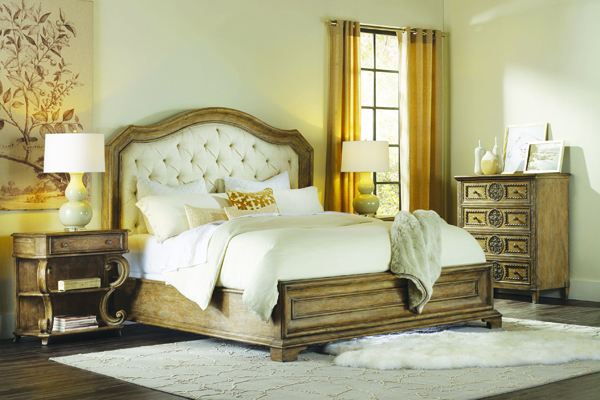Make Nightstands Your Bedroom Superhero
By Marla Caceres, Brand Publishing Writer
They are an indispensable but often underrated piece of bedroom furniture: nightstands. Although typically used as just a surface to place a book, lamp and a cell phone, many homeowners and designers have found the humble nightstand to be so much more.
Extra Clothing Storage
It used to be that when a dresser became full, extra storage space for clothes could be found in an armoire. But with the advent of flat-screen TVs, armoires have started to fall out of fashion.
"What we are seeing now are very few armoires being manufactured anymore," says Wendy Rossi, a Boca Raton-based interior designer with Baer's Furniture, a family-owned chain of fine furniture stores with 15 locations throughout Florida.
"The armoire has gone away with the flat-screen TV, because people used to hide televisions in armoires. Now they put them on the wall."
Instead, people are rediscovering the nightstand as a great option for extra clothing storage. Furniture manufacturers are noticing this trend, too, and are making larger nightstands with additional storage space.

“Nightstands can come in anywhere from 28 inches wide to 36 inches wide, which they call a bachelor’s chest,” says Lynn Goral, a Baer’s Furniture designer. “A bachelor’s chest has three drawers, so it provides lots of extra space.”
Some manufacturers are even offering the same nightstand design in small, medium and large sizes, as well as bachelor’s chest versions, Goral says.
Phone Charge Central
For many people, the nightstand is the most convenient place to charge a cell phone, e-book reader or tablet overnight because devices often act as alarm clocks, too. But that can mean a tangle of cables that quickly becomes unsightly. Many manufacturers have taken note and are designing nightstands that offer a neater solution.
“Furniture manufacturers are doing some nightstands with an open part in the back, where they have all the connections and slots to put the cables from phones and tablets, so you don’t have the cables around the top of the nightstand,” says Edith Orlansky, a design consultant for the Baer’s Furniture store in Pinecrest.
The End of Matchy-Matchy
When it comes to bedroom furniture, homeowners still have the option of buying perfectly coordinated bedroom sets that include a matching dresser, headboard, mirror and nightstands. However, many are choosing a more adventurous route
and selecting pieces that coordinate, but do not necessarily belong in the same set.
This is especially true when it comes to nightstands.
“Nowadays we are seeing more eclectic looks,” Orlansky says. “Sometimes you might even have something more feminine on the woman’s side of the bed, and something more masculine on the man’s side.”
People who have plenty of storage space for clothing might choose a simple, minimal round table as a nightstand. Adding a tablecloth to the top can add a touch of soft texture to the room, or a burst of contrasting color or pattern.
People who own upholstered headboards might think it would be challenging to figure out which kind of nightstand would go with their headboard, but designers say the options are actually very flexible.
“Upholstered headboards can go with absolutely anything, that is the flexibility they have,” Orlansky says. “Wood, metal, whatever you like, depending on the look you want to have.”
The most important factor to consider when selecting nightstands, designers say, is height.
“The nightstand should be as high as the mattress is, so it’s not too low and not too high to get to,” Goral says. “It has to be easy to reach.”
If your nightstands are different heights, you can even out the difference by placing a shorter lamp on the taller nightstand, and a taller lamp on the shorter nightstand. The mismatched lamps only add to the visual interest of the room, designers say.